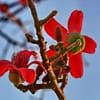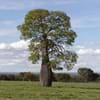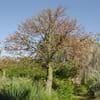Life Span
Perennial
Perennial
Origin
Mid-Atlantic United States, Southeastern United States, Central United States, South-Central United States
Hybrid origin
Types
not available
Alta fescue, Kentucky fescue
Number of Varieties
Not Available
Habitat
bottomlands, Depression on prairies, ditches, Floodplains, Riverbanks, stream banks, Swamps
meadows, Well Drained, yards
USDA Hardiness Zone
4-9
5-8
Sunset Zone
1a, 1b, 2a, 2b, 3a, 3b, 4, 5, 6, 7, 8, 9, 10, 11, 12, 13, 14, 15, 16, 17, 18, 19, 20, 21, 22, 23, 24
A1, A2, A3, 1a, 1b, 2a, 2b, 3a, 3b, 4, 5, 6, 7, 8, 9, 10, 14, 15, 16, 17, 18, 19, 20, 21, 22, 23, 24
Habit
Oval or Rounded
Clump-Forming
Minimum Width
Not Available
Flower Color
Yellow, Brown
Pale White
Flower Color Modifier
Bicolor
Bicolor
Fruit Color
Black
Non Fruiting Plant
Leaf Color in Spring
Green, Light Green
Blue Green
Leaf Color in Summer
Green, Light Green
Light Green
Leaf Color in Fall
Yellow, Light Yellow, Tan
Blue Green
Leaf Color in Winter
Not Available
Green, Tan
Leaf Shape
Oval with a pointed tip and fine teeth along their edges
Grass like
Plant Season
Spring, Summer, Fall, Winter
Spring, Fall
Sunlight
Full Sun, Partial Sun
Full Sun, Partial Sun
Type of Soil
Clay, Loam, Sand
Clay, Loam
The pH of Soil
Acidic, Neutral
Neutral, Alkaline
Soil Drainage
Average
Average
Bloom Time
Spring
Not Available
Tolerances
Wet Site, Pollution, Soil Compaction
Not Available
Where to Plant?
Ground
Ground
How to Plant?
Seedlings
Seedlings, vegetative cuttings
Plant Maintenance
Low
Medium
Watering Requirements
Requires a lot of watering, Requires regular watering
Allow to dry out slightly between watering, Never Over-water
In Summer
Lots of watering
Lots of watering
In Spring
Moderate
Moderate
In Winter
Average Water
Average Water
Soil pH
Acidic, Neutral
Neutral, Alkaline
Soil Type
Clay, Loam, Sand
Clay, Loam
Soil Drainage Capacity
Average
Average
Sun Exposure
Full Sun, Partial Sun
Full Sun, Partial Sun
Pruning
Prune in the late winter or spring, Remove dead or diseased plant parts, Shape and thin as needed
Prune after flowering, Prune for size control, Remove dead or diseased plant parts
Fertilizers
All-Purpose Liquid Fertilizer, No need to fertilize every year
All-Purpose Liquid Fertilizer
Pests and Diseases
Aphids, Red blotch, Sawfly Larvae
Brown patch, Gray leaf blight, Pythium blight, Rust, Zoysia patch
Plant Tolerance
Pollution, Soil Compaction, Wet Site
Full Sun, Heat And Humidity
Flowers
Showy
Insignificant
Flower Petal Number
Not Available
Single
Foliage Texture
Medium
Medium
Foliage Sheen
Matte
Matte
Attracts
Not Available
Mealybugs, Mites
Allergy
Asthma
Skin rash, Vomiting, Watery eyes
Aesthetic Uses
Showy Purposes
Ground Cover, Used in parkland
Beauty Benefits
Not Available
Not Available
Environmental Uses
Erosion control, Wildlife
Fixes Nitrogen, Prevent Soil Erosion
Medicinal Uses
No Medicinal Use
Antispasmodic
Part of Plant Used
Whole plant
Whole plant
Other Uses
used for making roof trusses, poles, joists, piles, Used in construction, Used in Furniture
Animal Feed, Used as Ornamental plant
Used As Indoor Plant
No
No
Used As Outdoor Plant
Yes
Yes
Garden Design
Feature Plant, Shade Trees
Groundcover, Lawns and Turf
Botanical Name
BETULA nigra
Festuca arundinacea
Common Name
River Birch
Tall Fescue
In Hindi
River Birch
tall fescue
In German
Fluss Birch
Rohr-Schwingel
In French
Birch river
Festuca arundinacea
In Spanish
river Birch
Festuca arundinacea
In Greek
ποταμός Birch
tall fescue
In Portuguese
river Birch
Festuca arundinacea
In Polish
Rzeka Birch
Kostrzewa trzcinowa
In Latin
Betula
tall fescue
Phylum
Magnoliophyta
Magnoliophyta
Class
Magnoliopsida
Liliopsida
Family
Betulaceae
Poaceae
Clade
Angiosperms, Eudicots, Rosids
Angiosperms, Commelinids, Monocots
Tribe
Not Available
Not Available
Subfamily
Not Available
Not Available
Number of Species
Not Available
Not Available
Season and Care of River Birch and Tall Fescue
Season and care of River Birch and Tall Fescue is important to know. While considering everything about River Birch and Tall Fescue Care, growing season is an essential factor. River Birch season is Spring, Summer, Fall and Winter and Tall Fescue season is Spring, Summer, Fall and Winter. The type of soil for River Birch is Clay, Loam, Sand and for Tall Fescue is Clay, Loam while the PH of soil for River Birch is Acidic, Neutral and for Tall Fescue is Neutral, Alkaline.
River Birch and Tall Fescue Physical Information
River Birch and Tall Fescue physical information is very important for comparison. River Birch height is 1,220.00 cm and width 1,220.00 cm whereas Tall Fescue height is 5.10 cm and width Not Available. The color specification of River Birch and Tall Fescue are as follows:
River Birch flower color: Yellow and Brown
River Birch leaf color: Green and Light Green
Tall Fescue flower color: Pale White
- Tall Fescue leaf color: Blue Green
Care of River Birch and Tall Fescue
Care of River Birch and Tall Fescue include pruning, fertilizers, watering etc. River Birch pruning is done Prune in the late winter or spring, Remove dead or diseased plant parts and Shape and thin as needed and Tall Fescue pruning is done Prune after flowering, Prune for size control and Remove dead or diseased plant parts. In summer River Birch needs Lots of watering and in winter, it needs Average Water. Whereas, in summer Tall Fescue needs Lots of watering and in winter, it needs Average Water.





